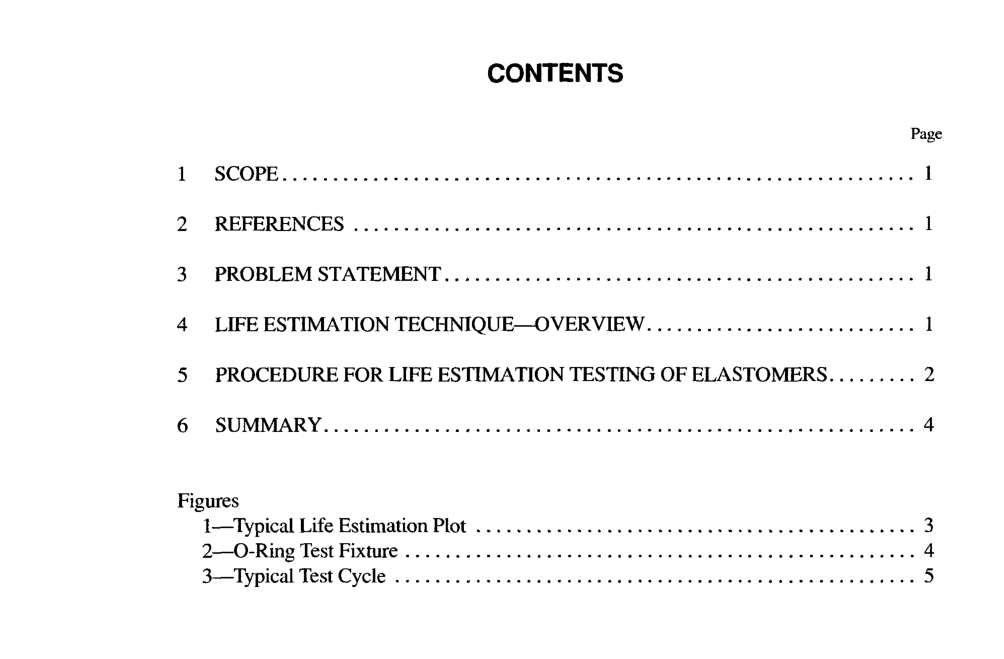API TR 6J1 pdf download

API TR 6J1 pdf download.Elastomer Life Estimation Testing Procedures
3 Problem Statement
3.1 Traditional methods of evaluating elastomers used for sealing elements involve the use of ASTM or other standard immersion-type tests. In these techniques, samples of the candidate elastomeric material are immersed in the antici- pated environment for a specified time period in the free state. Immersion times can vary from hours, to weeks, to months. The samples may be in a pressurized or unpressur- ized environment. The physical properties before and after immersion are compared and a judgment is made as to the suitability of the elastomer for use in the service environ- ment. The elastomeric material is generally not tested in its end use geometry (form) and not confined to a seal gland. In a properly designed seal gland, minimal seal surface area is exposed to the severe environment, and the gland physically limits the swell of the sealing element within the gland. The use of an immersion testing technique for retained physical properties does not answer the question of how long the elas- tomeric sealing element will function as a seal in a severe environment. Many sealing elements used in the energy exploration and oil/gas production industries are expected to remain serviceable (not leak) for up to 20 years in a severe service environment. 3.2 Traditional immersion tests for retained physical prop- erties have a role in the initial screening of suitable candidate elastomeric materials. A material would not be selected for service, which was severely attacked and deteriorated by the service environment in an immersion test. However, some degradation of physical properties (stress-strain) and volu- metric swell can be tolerated. It should also be noted that cer- tain elastomeric materials may sustain minimal property degradation in an immersion test, but they still may not be suitable for long-term sealing service. This is because they exhibit excessive creep or stress relaxation at high pressures and/or temperature.
4 Life Estimation Technique-Overview
4.1 The elastomer life estimation technique described below is based on the Arrhenius principle of chemical reac- tion rates. This principle is concerned with chemical reac- tion rates and the effects of temperature on these rates. In general, for every 10°C (18°F) temperature increase, the chemical reaction rate doubles. Conversely for every 10°C (18°F) decrease in temperature, the chemical reaction rate is reduced by i/2. Life estimation testing may be considered as the best esti- mate of long term service life to evaluate the long-term per- formance of an elastomer in a severe service environment. The basic technique involves collecting time to failure data at elevated temperatures (higher than the maximum anticipated service temperature) and plotting the results on semi-log graph paper. The vertical scale is the log of time to failure and the horizontal scale is the reciprocal of the absolute tempera- ture. Figure 1 shows a typical life estimation plot. Alternately, the time to failure at the service temperature also can be cal- culated from the appropriate mathematical formula. 4.4 Certain precautions should be exercised when perform- ing accelerated temperature and/or pressure tests. It should be verified experimentally that the failure mechanism (and acti- vation energy) does not change with elevated temperatures or pressures. In addition, it must be recognized gas diffusion may occur through an elastomer seal at an accelerated rate and this must be properly accounted for if this is used as fail- ure criteria. It also may be helpful to test an elastomer mate- rial with known field performance as a reference for comparison. Stagnant fluids and gases may give better or worse life estimation than if the fluids are periodically refreshed.









